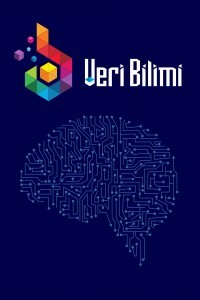Türkçe Hakaret ve Nefret Söylemi Otomatik Tespit Modeli
Hakaret Söylemi, Nefret Söylemi, BERT, Doğal Dil İşleme
Offensıve Language And Hate Speech Detectıon In Turkısh
Offensive Language, Hate Speech, BERT, Natural Language Processing,
___
- Sap, M., Card, D., Gabriel, S., Choi, Y., A, N., 2019. The risk of racial bias in hate speech detection. In Proceedings of the 57th Annual Meeting of the Association for Computational Linguistics , 1668– 1678.
- Mathew, B., Dutt, R., Goyal, P., Mukherjee, A., 2019. Spread of hate speech in online social media. In Proceedings of WebSci. ACM.
- Das, M., Mathew, B., Saha, P., Goyal, P., Mukherjee, A., 2020. Hate speech in online social media. ACM SIGWEB Newsletter, (Autumn) , 1–8.
- Rizwan, H., Shakeel, M.H., Karim, A., 2020. Hatespeech and offensive language detection in roman urdu. In Proceedings of the 2020 conference on empirical methods in natural language processing (EMNLP) , 2512–2522.
- https://www.theguardian.com/world/2018/mar/14/facebook-accused-by-sri-lanka-of-failing-tocontrol-hate-speech. (15.07.2022)
- https://www.reuters.com/investigates/specialreport/myanmar-facebook-hate. (15.07.2022)
- https://money.cnn.com/2017/06/01/technology/twitter-facebook-hate-speech-europe/index.html (15.07.2022)
- https://help.twitter.com/tr/rules-andpolicies/hateful-conduct-policy. (17.07.2022)
- https://www.theverge.com/2019/12/16/21021005/google-youtube-moderators-ptsd-accentureviolent-disturbing-content-interviews-video(17.07.2022)
- Wiedemann, G., Ruppert, E., Jindal, R., Biemann, C., 2018. Transfer learning from lda to bilstm-cnn for offensive language detection in twitter. Proceedings of GermEval 2018, 14th Conference on Natural Language Processing (KONVENS 2018) , 85–94.
- Nobata, C., Tetreault, J., Thomas, A., Mehdad, Y., Chang, Y., 2016. Abusive language detection in online user content. In Proceedings of the 25th International Conference on World Wide Web. International World Wide Web Conferences Steering Committee , 145–153.
- Davidson, T., Warmsley, D., Macy, M., Weber, I., 2017. Automated hate speech detection and the problem of offensive language. The 11th International AAAI Conference on Web and Social Media , 6–7.
- Waseem, Z., Hovy, D., 2016. Hateful symbols or hateful people? predictive features for hate speech detection on twitter. In Proceedings of the North American Chapter of the Association for Computational Linguistics: Human Language Technologies , 88–93.
- Zampieri, M., Malmasi, S., Nakov, P., Rosenthal, S., Farra, N., Kumar, R., 2019a. Predicting the type and target of offensive posts in social media. In Proceedings of the 2019 Conference of the North American Chapter of the Association for Computational Linguistics: Human Language Technologies.
- Çağrı Çöltekin, 2020. A corpus of turkish offensive language on social media. Proceedings of the 12th Language Resources and Evaluation Conference, 6174–6184.
- Zampieri, M., Nakov, P., Rosenthal, S., Atanasova, P., Karadzhov, G., Mubarak, H., Derczynski, L., Pitenis, Z., Çağrı Çöltekin, 2020. Semeval-2020 task 12: Multilingual offensive language identification in social media (offenseval 2020). In Proceedings of SemEval
- Şahi, H., Kılıç, Y., Sağlam, R.B., 2018. Automated detection of hate speech towards woman on twitter. 3rd International Conference
- Mayda, I., Diri, B., Dalyan, T., 2021. Türkçe tweetler üzerinde makine öğrenmesi ile nefret söylemi tespiti. Avrupa Bilim ve Teknoloji Dergisi , 328–334.
- Sezer, T., 2020. Twitter derlemi – ts tweets corpus. URL: https://tanersezer.com/?p=155. (14.09.2020)
- Kemik, 2020. Kemik doğal dil İşleme grubu. URL: http://www.kemik.yildiz.edu.tr/verikumelerimiz.html. (10.09.2020)
- https://github.com/drsalihkurt/HateSpeechandOffensiveLanguageDetectionInTurkish. (15.05.2023)
- Devlin, J., Chang, M.W., Lee, K., Toutanova, K., 2018. Bert: Pre-training of deep bidirectional transformers for language understanding. arXivpreprint arXiv:1810.04805.
- Peters, M.E., Neumann, M., Iyyer, M., Gardner, M., Clark, C., Lee, K., Zettlemoyer, L., 2018. Deep contextualized word representations. arxiv preprintarxiv:1802.05365. Structure.
- Howard, J., Ruder, S., 2018. Bert: Pre-training of deep bidirectional transformers for language understanding. In Proceedings of the 56th Annual Meeting of the Association for Computational Linguistics5 , 328–339.
- Radford, A., Narasimhan, K., Salimans, T., Sutskever, I., 2018. Improving language understanding by generative pre-training. Technical Report. OpenAI.
- Sanh, V., Debut, L., Chaumond, J., Wolf, T., 2019. Distilbert, a distilled version of bert: smaller, faster, cheaper and lighter. arXiv preprint arXiv:1910.01108.
- Liu, Y., Ott, M., Goyal, N., Du, J., Joshi, M., Chen, D., Levy, O., Lewis, M., Zettlemoyer, L., Stoyanov, V., 2019. Roberta: A robustly optimized bert pretraining approach. arXiv preprint arXiv:1907.11692
- Conneau, A., Khandelwal, K., Goyal, N., Chaudhary, V., Wenzek, G., Guzman, F., Grave, E., Ott, M., Zettlemoyer, L., Stoyanov, V., 2020. Unsupervised cross-lingual representation learning at scale. In Proceedings of the 58th Annual Meeting of the Association for Computational Linguistics (ACL) .
- Başlangıç: 2018
- Yayıncı: Murat GÖK
Semra ERPOLAT TAŞABAT, Ebru OĞUZ, Gülay Ilona TELSİZ KAYAOĞLU, Mert ERSEN
Optimal küme sayısının belirlenmesinde kullanılan yöntemlerin karşılaştırılması
Fatih Emre ÖZTÜRK, Neslihan DEMİREL
Türkçe Hakaret ve Nefret Söylemi Otomatik Tespit Modeli
Mehmet Salih KURT, Eylem YÜCEL DEMİREL
G. Çiğdem ÇAVDAROĞLU, Ahmet Okan ARIK
